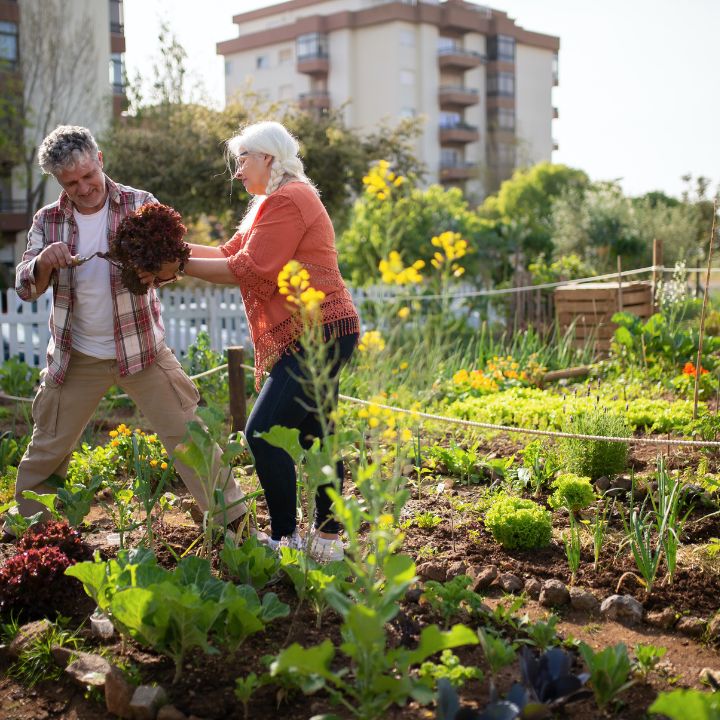Why Victory Gardens are Planted in People’s Backyards
What Was a Victory Garden From WW2?
As you begin your victory garden plans, it is important to know what is a victory garden? The original victory garden movement was started over 100 years ago. As a response to food shortages during World War I, the USDA granted support to networks of school gardens and established the United States School Garden Army. School children were encouraged to participate in planting and tending to victory gardens that helped feed the community.
Soon, the movement gained popularity and victory gardens popped up in backyards, public spaces, and even the White House lawn. Victory gardens were so successful that the practice continued into WWII, with an estimated 20 million victory gardens growing in the U.S. by 1944, supplying about 40% of the nation’s produce.
Why Should I Plant a Victory Garden?
Your victory garden won’t only provide you with home-grown vegetable and fruit, it will help to reduce your carbon footprint in several ways. You’ll rely less on commercial farms, which aren’t as sustainable as your garden, plus it requires packaging and transportation. You’ll also support pollinators and help capture carbon dioxide so it can’t contribute to the greenhouse effect.
Household and community gardens are much better for the environment than traditional turf lawns. Traditional lawns require a lot of water, plus chemicals used to control pests and weeds drain into the water supply. Turf grasses don’t sequester much carbon, either.

Getting Started on a Victory Garden Plan
There is no strict method of growing a victory garden, you can do whatever works best for your space and the amount of time or money you’re able to invest. Your garden can be any size and have any variety of plants.
Choose the Site of Your Victory Garden
Be sure to pick a spot that gets enough sun and minimal traffic. Yards usually work great, but make sure to check for any restrictions if you have an HOA. You can even join forces with like-minded gardeners and start a school or community garden.
Plan Out Your Garden
You can go with traditional garden beds, raised beds, or containers, depending on your space and the nature of the soil in your area. For a baseline, it’s a good idea to get your soil tested – this might help you decide which direction you want to take. If there are contaminants in the soil, an unsuitable pH, or drainage problems you might need to grow in containers or amend the soil.
Build Your Garden Bed or Position Your Containers
Even if you are going with traditional garden beds, build them up to create clear walking paths. You can do this by transferring soil from your planned walking area. This is a good time to amend the soil if needed and add compost. If you’re planting in containers, it’s best to use a good potting soil to avoid compaction and drainage problems.
Choose Your Plants & Map Out Your Garden
Whether you’re growing from seeds or seedlings, make sure to choose plants that are suitable for your growing zone, and will receive the amount of sun they require. When mapping out the garden, consider how much space each plant needs. If the seeds or seedlings don’t indicate the required space, you can look up the plant’s full-grown size and use this as your spacing.
What is Planted in a Victory Garden
Traditionally, the following were grown in the victory gardens of WW2.
- beans
- beets
- cabbage
- carrots
- kale
- lettuce
- peas
- tomatoes
- turnips
- squash
- Swiss chard
Plant Your Seed or Seedlings
It’s best to follow the instructions on the seed packet or seedlings, but a bit of research will help if planting instructions are missing. Find out what your zone’s frost dates are – most planting instructions are based around this date. If your seeds require germination before the last frost, you may have to start them indoors for transplanting later. Seed starter trays and a grow light will help you get a head start.
Tend to Your Victory Garden & Harvest
Follow growing instructions when watering your plants, remove any encroaching weeds, and monitor for any plant disease or pest problems. There are now plenty of organic pesticides and fungicides that are safe for vegetable gardening, plus home remedies that use ingredients that are safe for people.
Keep Notes on Which Plants Strive & Which Ones Struggle
This will help set you up for success during the next growing season. Some plants simply won’t thrive in the garden for various reasons-sun under/overexposure, competing plants, and weather conditions are all factors to consider when charting the success of your plants.

